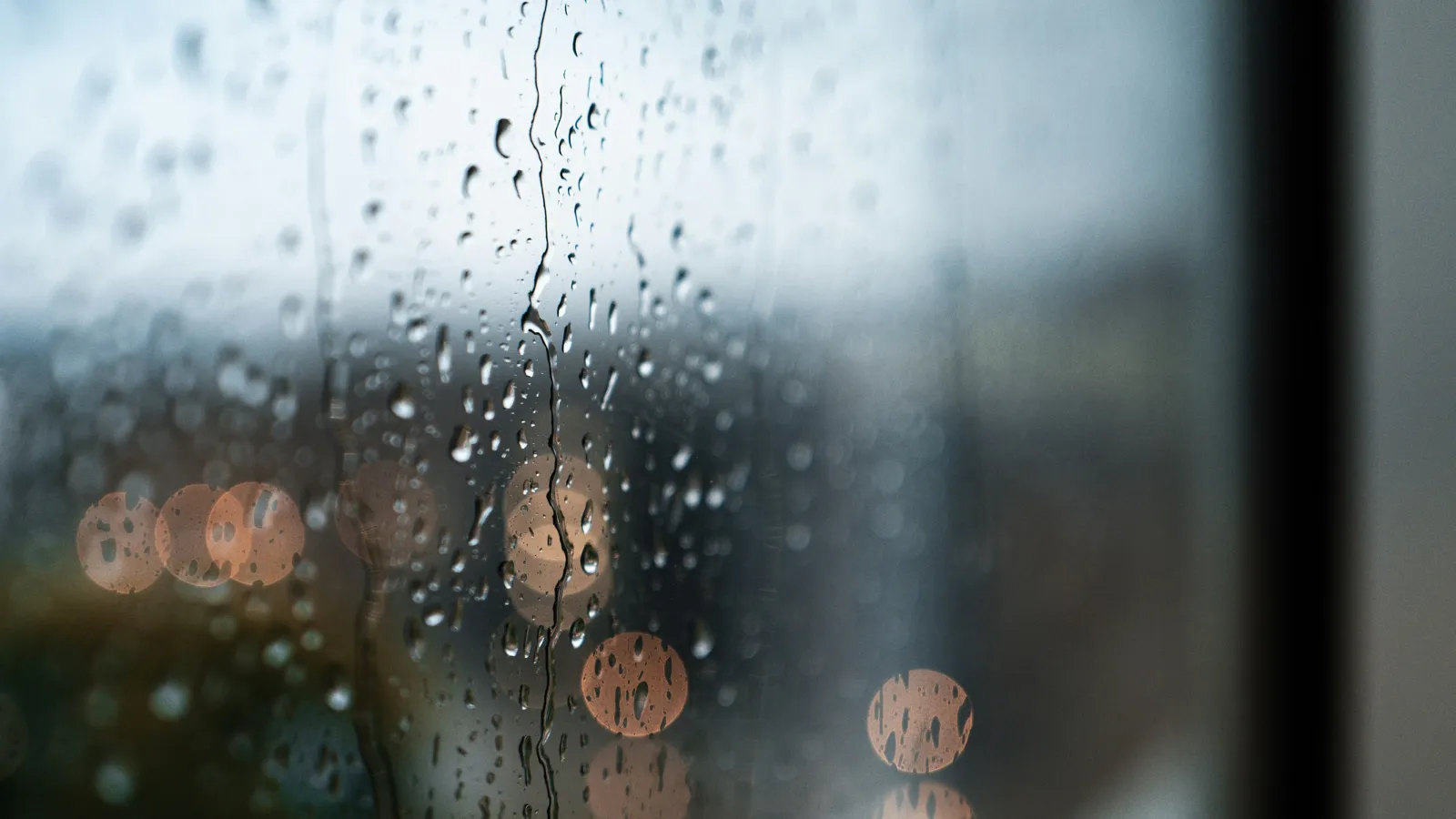Wet insulation in your attic is a red flag that something's not right in your home. Whether it's a leaky roof, high humidity, or poor ventilation, moisture doesn't belong in your insulation. And when it's there, it can quietly damage your home and health. So if you're asking, "Why is my attic insulation wet?" — you're not alone. This article explains what causes wet insulation, what it looks like, why it matters, and what to do about it.
What Causes Wet Insulation?
Attic insulation gets wet when moisture sneaks into places it doesn't belong. And that can happen in more ways than you might think:
-
Roof leaks - The most common culprit. Water may drip directly onto insulation or run along rafters and soak insulation far from the source.
-
Condensation from poor ventilation - In colder months, warm indoor air can escape into the attic and condense on cooler surfaces, soaking insulation below.
-
Blown-in snow - If snow sneaks in through vents or ridge caps during windy storms, it can melt and saturate the insulation.
-
Humidity and air leaks - If your attic isn't air sealed, humid air from bathrooms, kitchens, or outdoors can condense inside the attic, leading to wet insulation over time.
-
Plumbing or HVAC leaks - Occasionally, a pipe or AC drain line running through your attic can spring a leak and create localized wet spots.
Let's say you went up to store holiday decorations and noticed the white blown-in insulation looked darker and clumped in one area. That's likely moisture damage—and it's worth investigating further.
What Does Wet Insulation Look Like?
The signs depend on the material:
-
White blown-in insulation (fiberglass): Looks gray or heavy in spots. It may clump together or appear "sunken."
-
Wet cellulose insulation: Feels mushy and compacted. It often darkens in color and may smell musty.
-
Spray foam insulation: Usually doesn't look wet—closed-cell spray foam is moisture-resistant. But it can trap water between the foam and surrounding wood, which can still cause rot or mold.
-
Batts or rolls: These get heavy, sag, or flatten. If you see water marks or mildew on the kraft paper backing, there's a problem.
Even if it doesn't feel soaked, damp insulation can lose its effectiveness and create hidden damage over time.
What Happens if Insulation Gets Wet?
Here's where the problems stack up fast:
-
Insulation performance drops: Water fills the air pockets that make insulation effective. Without them, you lose thermal resistance—and your HVAC system works harder to keep up.
-
It can grow mold: Wet insulation, especially cellulose, becomes a breeding ground for mold and mildew. That affects indoor air quality and can cause health issues.
-
Wood rot and pests: Moisture encourages wood decay in rafters or joists. It also attracts pests like carpenter ants or termites.
-
It can smell: Musty odors often follow wet insulation, especially if it's left untreated for too long.
If you're wondering "Can insulation get moldy?" — yes, especially if it stays wet for more than 24-48 hours. That's why it's critical to act quickly.
How Long Does It Take Wet Insulation to Dry?
There's no one-size-fits-all answer—it depends on the insulation type, how wet it is, and airflow:
-
Fiberglass batts may dry in a few days if just slightly damp, but heavy saturation often requires replacement.
-
Wet cellulose insulation should be replaced. It's hard to dry out completely and breaks down quickly.
-
Blown-in fiberglass can sometimes be fluffed and dried, but if it's soaked, removal is usually the best choice.
-
Closed-cell spray foam rarely absorbs water, but if nearby materials are wet, drying depends on airflow.
Running fans and dehumidifiers can help in mildly damp situations, but insulation that's been soaked or wet for several days should usually be removed.
Can Insulation Get Wet and Still Be Used?
In limited cases, yes—but you'll need to be careful. If only a small section is affected and you catch it early, you may be able to dry it and keep it. But if it's sagging, clumpy, smells off, or is moldy, don't risk it.
Also consider what caused the moisture in the first place. If you don't fix the leak or source of humidity, it'll just happen again.
Does Spray Foam Absorb Water?
This is where spray foam stands out.
-
Closed-cell spray foam is highly moisture-resistant and doesn't absorb water like other materials. It can even add structural integrity and act as an air barrier.
-
Open-cell spray foam is less resistant to water and can retain moisture if exposed.
Still, if water gets trapped between spray foam and wood, it can create hidden rot. That's why professional installation and proper sealing are so important.
Should You Replace Wet Insulation?
If you're asking yourself, "Can I just let it dry?"—it depends. But if you're unsure, it's always better to consult a professional. Here's a basic guideline:
| Insulation Type | Slightly Damp | Soaked | Moldy or Smells Musty |
|---|---|---|---|
| Fiberglass Batts | Dryable | Replace | Replace |
| Blown-in Fiberglass | Maybe dryable | Replace | Replace |
| Cellulose | Not recommended | Replace | Replace |
| Spray Foam (Closed-Cell) | Usually OK | Inspect surrounding materials | Replace if compromised |
Is There Moisture-Resistant Insulation?
Yes—and it's worth considering if you're replacing damaged insulation or insulating a moisture-prone area like an attic or basement.
-
Closed-cell spray foam - Best for moisture resistance and air sealing.
-
Foam board insulation - Good for basements or crawlspaces.
-
Fiberglass with vapor barriers - Offers protection when installed properly.
USA Insulation also offers premium injection wall foam that doesn't retain moisture like cellulose and fills every gap for a tight thermal and moisture seal—ideal if you're worried about humid air creeping into your attic.
Why This Matters for Your Home
When insulation gets wet, it stops doing its job. That means:
-
Higher energy bills
-
A less comfortable home
-
Possible health risks
-
Structural problems if rot or mold spreads
And because wet insulation often points to a larger issue—like poor ventilation or leaks—it's a sign your home could use a closer look.
What Should You Do if You Find Wet Insulation?
-
Identify the moisture source - Roof, HVAC, plumbing, or air leaks? It must be fixed first.
-
Assess the insulation - Is it wet in just one spot or across a large area?
-
Decide whether to dry or replace - A pro can help determine this based on material and moisture level.
-
Consider upgrading - If your insulation is older or poorly installed, this is a great time to upgrade to something more moisture-resistant.
Conclusion: What Happens if Insulation Gets Wet?
So, what happens if insulation gets wet? It loses its effectiveness, increases the risk of mold and rot, and can quietly cost you comfort and money. If you've spotted damp insulation or signs of moisture in your attic, don't ignore it. Whether it's a leak, condensation, or poor airflow, the longer it sits, the worse it gets.
Call USA Insulation today for a free inspection or quote. We offer:
-
Blown-in attic insulation to replace old, ineffective materials
-
Premium injection wall foam that fills gaps and resists moisture
-
Spray foam insulation for long-lasting protection
-
Air sealing services to prevent humidity and leaks from getting in
Let us help you fix the root cause—and keep your home dry, comfortable, and energy-efficient.
Call or contact USA Insulation now to schedule your appointment.



